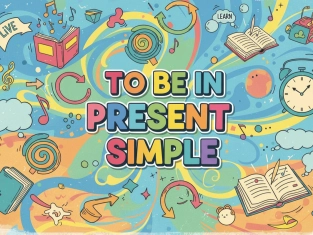Present Simple
Table of Contents
Exercises
Explanation
When do we use the Present Simple?
Habits and routines:
-
I drink coffee every morning.
-
She goes to the gym on Mondays.
General facts or truths:
-
The sun rises in the east.
-
Water boils at 100°C.
Schedules and timetables:
-
The train leaves at 9 p.m.
-
My English class starts at 6.
Permanent situations:
-
They live in London.
-
He works in a hospital.
Present Simple Forms
Affirmative (Positive)
I/You/We/They + base verb
-
I play football.
-
They study English.
He/She/It + base verb + -s/-es
-
She plays football.
-
It rains a lot here.
Remember: Add -es to verbs ending in -o, -ss, -sh, -ch, -x, -z (e.g., go → goes, wash → washes).
Negative
I/You/We/They + do not (don’t) + base verb
-
I don’t like pizza.
-
They don’t watch TV.
He/She/It + does not (doesn’t) + base verb
-
She doesn’t like pizza.
-
It doesn’t work properly.
Questions (Interrogative)
Do + I/you/we/they + base verb?
-
Do you play tennis?
-
Do they speak Spanish?
Does + he/she/it + base verb?
-
Does he play tennis?
-
Does it rain often here?
Short answers:
-
Yes, I do. / No, I don’t.
-
Yes, she does. / No, she doesn’t.
Common Signal Words
The Present Simple is often used with:
-
always, usually, often, sometimes, never
-
every day, every week, on Mondays
-
in the morning, at night
Examples:
-
I always brush my teeth in the morning.
-
She never eats fast food.
